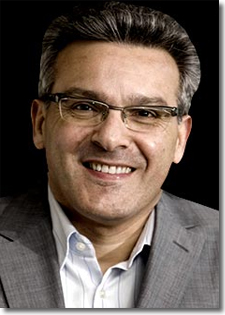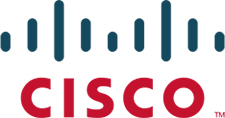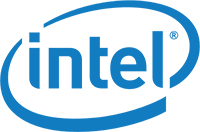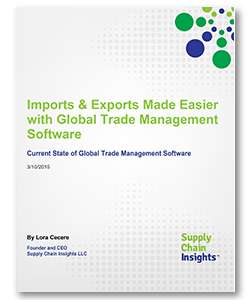What Does It Take To Remain A Supply Chain Leader?

Supply Chain Management Review put the question, "what does it take to remain a supply chain leader?" to executives at four of the best performing global supply chains and asked about their plans to remain at the top of their games in the year ahead.
We all know the best performing supply chains and what they have done to reach the top rungs in their industries.
After all, Supply Chain Management Review publishes Gartner’s annual Supply Chain Top 25 every September.
But as with winning sports teams, no supply chain can rest on its laurels.
The day after winning the Super Bowl, the World Series, or the Final Four, the best coaches begin preparing for the season ahead. So it is with supply chains: The best run organizations are constantly looking for the areas in which they have room for improvement, as well as the innovations that may put further distance between them and the rest of the pack.
So, what are the priorities for the coming year for supply chain leaders? That’s a question we put to supply chain executives at four companies on this year’s Supply Chain Top 25: Unilever (No. 4), P&G (No. 5), Cisco (No. 7), and Intel (No. 8).
The initiatives they have put at the top of their To Do lists for 2015 are diverse and reflect the broad umbrella that covers supply chain management. They may also provide food for thought for your own organization.
Cisco: The Transformational Supply Chain
The Internet of Things, the Cloud, and Big Data are high on Cisco’s priority list. The goal: enable the supply chain to support a new business model.
Cisco is undergoing a transformation. For years, this tech leader, with $50 billion in revenue, was known as a networking hardware company with great software. “Buy the hardware and get the software for free,” described Cisco’s go-to-market strategy.
Today, that strategy has been turned on its head: Software and solutions are the name of the game. “Our customers are looking for us to provide a complete software and integrated solution, and not just ship the hardware,” says John O’Connor, senior director of supply chain transformation. “That’s a big shift.”

As O’Connor’s title suggests, Cisco’s supply chain is also undergoing a transformation to support its company strategy. It is not easy. First, it is a complex, distributed global network, with 18 to 20 nodes. Cisco’s 2,500 internal supply chain personnel manage some 25,000 individuals outside the organization who are focused on Cisco’s supply chain.
More importantly, Cisco has spent the last two years replacing its legacy systems with new ERP and product lifecycle management systems, a data management platform, and a logistics control tower to facilitate the changes ahead. “To continue to scale, we had to get off of the highly-customized platforms we had been using,” says John Kern, senior vice president of supply chain operations.
That work laid the groundwork for investments in new strategies and technologies that will drive the company’s future. The big ideas include Big Data, the Cloud, Mobility, and the Internet of Things. “We are thinking about the strategies and technologies that will deliver the next generation of productivity and a differentiated customer experience,” says O’Connor. They include:
The Connected Supply Chain. Cisco is working on a radical expansion of its sensing capabilities by increasing its use of RFID, barcode scanning, and sensors on the manufacturing floor and across its network. “If you think of the Internet of Things, we’re creating a comprehensive web of connectivity to pull data from people, processes, and things,” Kern says. “We want to tap into every node in our network, upstream and downstream.” By linking systems and processes, Cisco can use its control tower to automatically change production flows and reroute purchase orders in an instant.
The Mobile Supply Chain. Free the people could be the rallying cry for Cisco’s mobile strategy. Instead of working behind a desk on a PC or a Mac, Cisco wants to put its applications in the Cloud and decision-making capabilities in the hands of its supply chain personnel. “We want visibility into inventory up and down the supply chain, including inbound component inventory through product in our distribution channels, to enable our teams to use their smart phones to take real-time action,” says O’Connor.
The Analytic Supply Chain. More sensing devices and more nodes translate into more data - Big Data. That includes capturing unstructured data, like customer notes. The next step in Cisco’s transformation is to analyze that Big Data in seconds in order to make real-time decisions. The real goal is to evolve from reacting to issues after the fact, to taking proactive steps before a quality or throughput issue occurs.
“We want to look at the performance of products - all the way from sub-tier components through the manufacturing and shipment of finished goods - to identify quality or production problems or to proactively identify where we have an order that may need to be expedited,” says O’Connor.
Those strategies are possible because of the core work over the last two years. “We have reliable data and a stable, mission-critical reporting environment,” O’Connor says. “Now, we can leverage those resources for the next wave of supply chain productivity.”
P&G: Customer Centricity and the Responsive Supply Chain
Long known as an efficient manufacturer, P&G is expanding its consumer-centric model to actively include the customers’ needs. From the store shelves to the manufacturing floor, P&G is assessing what supply chain solutions provide the most value to retail customers and consumer alike, with faster-than-ever response times.
With approximately 73,000 team members powering a supply network that includes over 130 manufacturing sites and more than 200 distribution centers, P&G’s supply management organization “touches each and every one of our retail customers across the globe,” says Yannis Skoufalos, P&G’s global product supply officer.

Supply Network excellence and professionalism is a very significant contributor behind a planned $6 billion reduction in P&G’s cost of goods over five years, including the delivery of a $1.6 billion reduction in 2013.
While metrics like cost of goods and case fill rates are traditional measurements, P&G is on a journey to deliver more on what its customers need - one whose brand equity is measured by how it touches the lives of its end consumers. P&G’s supply chain performance is measured by the metrics that are important to its myriad of customers, each with its own yard stick.
The goal is to align 80 percent of total business and services in the same way as those that are tracked by the customers. Think of it as Customer Centricity. “Service as measured by our customers is reshaping the way we engage with our market,” Skoufalos says. “Some customers track on time delivery and some measure us on EDI data transmissions. As soon as you understand what measurements are important to them, it opens up an array of ideas about what service excellence is all about.”
To that end, P&G has already announced to Wall Street a major redesign of its flagship supply networks in North America and Europe for 2015. Two ongoing initiatives illustrate how this restructuring is impacting the supply chain.
First, in North America, P&G is putting a premium on responsiveness with a distribution goal of being within one day’s transit to 80 percent of retailers. To do that, P&G is building six mega-distribution centers in strategic locations across the country. The facilities are designed to receive and cross-dock product from all of P&G’s business units for speedy and efficient delivery of mixed truckloads. Facilities in Moreno Valley, Calif. and Shippensburg, Penn. are already up and running. The other centers will be operational by October 2015.
To support the network of mega-distribution centers, P&G is also planning to reconfigure its North American manufacturing base, again with responsiveness in mind. Rather than having a dispersed network that is forecast-driven, P&G is adopting a demand-driven replenishment model based on point of sale (POS) information coming from its retail customers.
To speed up response time, it is asking suppliers to create “supplier villages” next to its plants, similar to the just-in-time model employed by the automotive industry. Suppliers can then respond much more quickly to P&G. “Having the ability to take an uninterrupted thread from POS data to the supplier base and on through the distribution network is what we are trying to address,” says Skoufalos. “This is the future of supply chain management at P&G.”
Intel: Managing a Supply Chain that Enables Moore’s Law
Intel’s goal is to stay several generations ahead of its competitors in the semiconductor industry. So, the supply chain must stay ahead of the curve.
“Intel’s secret sauce is our ability to continue Moore’s law,” says Jackie Sturm, vice president and general manager of Intel global supply management. “To support that from a supply chain standpoint, we and our suppliers must be one or two generations ahead of our competitors.”
Moore’s law is named after Intel’s co-founder, Gordon E. Moore, who wrote in 1965 that over time, the number of transistors in a dense integrated circuit doubles approximately every two years.

Delivering a continuous and significant advance to Intel’s technology every two years or less is a complex and challenging process, especially across a large and diverse supply chain. It requires collaboration between internal technology experts and suppliers of chemicals, specialty gasses, precision equipment, and metals and minerals to meet Intel’s growing needs; it also is dependent on the ability to take the chemistry developed in a test tube in a lab - or a garage - and ramp it up to volume in a fab plant.
And, given that many of the chemicals and raw materials are highly regulated, they must be sourced, handled, tracked, and disposed of in compliance with government regulations. To continue Moore’s law, Intel has set at least three priorities for its supply chain for the coming years.
Ethical Sourcing. Intel is considered the electronics industry’s leader in the effort to eliminate conflict minerals from products, specifically tantalum, tin, tungsten, and gold mined in the Congo. “We can say to a high degree of certainty that we are free of conflict minerals in microprocessors and that work in the broader supply chain will continue in 2015,” Sturm says.
Intel is also working to improve the health and safety of workers at suppliers in emerging markets. For instance, Sturm recently encouraged suppliers to ensure the availability and use of functioning personal protective equipment devices, like safety glasses and ear protection, at a keynote address in Shanghai where Intel suppliers gather annually for dialogue and learning on supplier sustainability.
Partner of Choice. Intel’s engagement with its customers is changing. “We are becoming the partner of choice,” says Mani Janakiram, director, supply chain strategy and analytics. “We are doing that by aligning our business strategies with their business values and by making the issues our customers face, our issues.” One example: Intel is extending its expansive portfolio of supply chain visibility and analytical tools to predict its customers’ demand.
And, it is expanding those tools, with the addition of social media, mobile, and cloud technologies to better leverage Big Data in supply chain. “We have service level and vendor managed inventory agreements in place to lean out the supply chain,” he says. “But with visibility and predictive analytics, we will be more effective at positioning and delivering the parts that our customers require, when they are required.”
Demand Shaping. In addition to managing billions of dollars of capacity, Intel works closely with customers to shape demand for new products that then drives the demand for Intel products. At the dawn of the smart phone, for instance, Intel worked with suppliers to develop cost-effective touch displays when that was a nascent technology. It is also important in untapped, emerging markets. “We want to make sure that smaller manufacturers have access to memory and other components to produce the products they need for a market like China,” says Sturm.
Unilever: Building a Brighter Future with Supply Chain Management
In Europe, sustainable sourcing, logistics control towers, and distribution hubs are delivering growth and contributing to Unilever’s Sustainable Living Plan.
“In the supply chain at Unilever, our purpose is to deliver sustainable and profitable growth,” says Neil Humphrey, Unilever’s senior vice president of supply chain for Europe. “We are looking beyond financial results to our impact on the world around us, from reducing our environmental footprint to improving the livelihoods of small farmers and the communities in which we operate.”
Humphrey is referring to Unilever’s heralded Sustainable Living Plan. While building a brighter future is a significant ambition, he says the job of the supply chain is to enable sustainable growth in the context of a brighter future. “For example, in Europe, our brand commands a premium over discounted brands, so we have to deliver an absolute better quality product with the highest standards of sourcing, manufacturing, and delivery.”

Those goals translate to European factories that are zero waste to the landfill and 50 percent of raw agricultural materials sustainably sourced, including challenging fields such as palm oil and tea. “With our scale, we can insist on certain standards for sustainably sourced raw materials, which in turn will change the way entire businesses operate,” Humphrey says.
Control Tower. Three years ago, Unilever implemented a control tower in Europe built around an end-to-end transportation management system that delivers full visibility into the three Cs of customer service, carbon, and costs. “We began by managing inbound material flows across 35 countries in Europe,” says Humphrey. “We’re now covering all logistics flows by rolling out secondary distribution that will also be managed from this central control tower in Poland.”
In-sourcing Rather than Outsourcing. While many companies outsource logistics services to concentrate on core competencies, Unilever is in the process of in-sourcing services that have been done by 3PLs to reduce carbon and costs. “We have the scale and capabilities to improve our service costs while taking one in five trucks off the road in Europe,” Humphrey says.
Centralizing the network. Unilever is in the process of opening five distribution hubs in Europe; this distribution network will eventually be expanded globally. The idea is to have all finished goods shipped through these hubs, which serves to consolidate shipments between customers, factories, and suppliers, reducing the number of deliveries as well as Unilever’s environmental footprint. “We’ll no longer have a supplier shipping to multiple factories,” says Humphrey. “Instead, they can ship to one supply hub that will consolidate shipments to service those factories.”
Insights on Supply Chain Organizations
By Lora Cecere, Founder of Supply Chain Insights
In the early years, there were no supply chain organizations. I like many other gray-haired supply chain professionals reported through a functional organization like manufacturing or transportation. For me, it was manufacturing. I proudly wore my red hard hat, yellow jumpsuit and tan safety shoes in a world of rhythmic machinery and constant manual scheduling. I loved to open the doors of the factory floor and hear the hum of production. I liked belonging to an organization that made things. It was a special club. This all changed.
In the mid-1980s, leaders like Colgate, Intel, and Procter & Gamble defined supply chain organizations where source, make and deliver functions reported through the same organization, and had a common leader. Today, we know that when these organizations defined with a focus on end-to-end processes there was better alignment, agility and resiliency in balance sheet results. They were pioneers: the exception, not the rule.
For the majority of companies, the supply chain organization is now 15-years old. It has seven functions reporting through the supply chain leader. The reporting of manufacturing and procurement organizations through the supply chain leader has the probability of the flip of a coin. There is only a 50% chance that manufacturing or procurement are one of these functions reporting through the supply chain organizations. Even today, most organizations are still very functionally defined. We are still very early in the definition of end-to-end supply chain excellence.
However, ever so slowly, things are changing. Today, roughly one in three companies have a Chief Supply Chain Officer (CSCO). While these positions look very different - varying by culture and structural definition - we can clearly see supply chain is rising in importance. There was no CSCO in the 1980s or 1990s. They first appeared on the scene in 2005. Today, the role is growing in stature and acceptance.
To drive progress, one in three companies also has a supply chain center of excellence.
Organizational success is not guaranteed. Today, only slightly more than 50% rate these organizations as effective. Why? At first these numbers surprised me. I thought that they would be higher. So, we started digging into the research to gain an understanding.
In our studies, we found that it comes down to the tug of war between functional excellence and the definition of end-to-end processes. They are quite different, and many companies have not defined supply chain excellence sufficiently to enable success. In addition, we find that the center of excellence will fail if:
- There is not the right balance between push and pull. The highest rated supply chain centers of excellence let themselves be pulled into the business based on business demand. They do not make the mistake of forcing themselves on business leaders.
- It does not serve the business. Many supply chain centers of excellence become academic and irrelevant. To be successful, the center needs to serve the business and help to align tactics to achieve business strategies.
- Cannot stay relevant. The center of excellence must have a stake in the game and carry a portion of the business goals. It cannot be relevant if it is a part-time, or understaffed, superfluous organization.
Are you interested in understanding more? Help us to help you better understand supply chain centers of excellence by participating in our research study on what makes a center of excellence successful. We hope to hear from you!
Research Papers
- The Supply Chain Index – Improving Strength, Balance and Resiliency
- Supply Chain Metrics That Matter: Improving Supply Chain Resiliency
Related: Supply Chains to Admire

Article Topics
Supply Chain Insights News & Resources
Talking Supply Chain Podcast: Insights on Leaders - The Top 25 CHAPTER 3: Bricks Matter Infor Aquires GT Nexus - If I Had a Magic Wand! Why Are We Letting Digital Marketers Define The Future World View of The Supply Chain? Imports & Exports Made Easier with Global Trade Management Software Maximizing the ROI in Supply Chain Planning Getting Inventory Right: Hope with Hype and Recycled Supply Chain Software? More Supply Chain InsightsLatest in Supply Chain
Baltimore Bridge Collapse: Impact on Freight Navigating TIm Cook Says Apple Plans to Increase Investments in Vietnam Amazon Logistics’ Growth Shakes Up Shipping Industry in 2023 Spotlight Startup: Cart.com is Reimagining Logistics Walmart and Swisslog Expand Partnership with New Texas Facility Nissan Channels Tesla With Its Latest Manufacturing Process Taking Stock of Today’s Robotics Market and What the Future Holds More Supply ChainAbout the Author



















